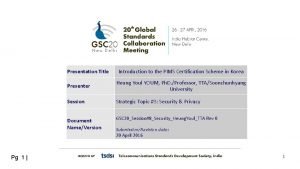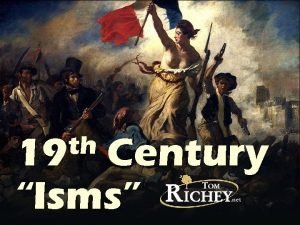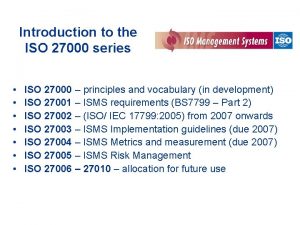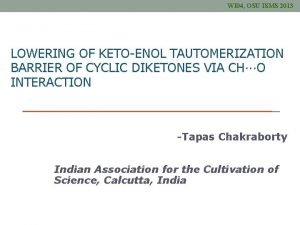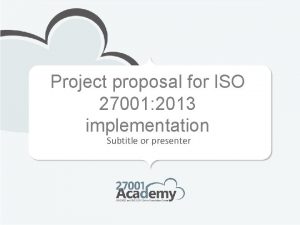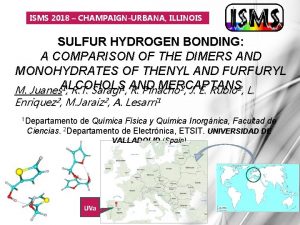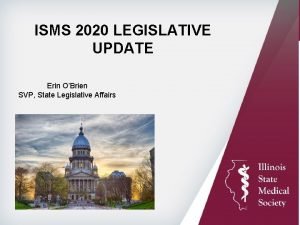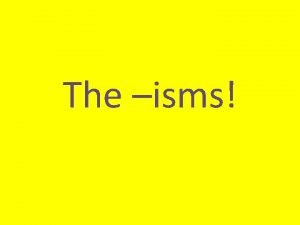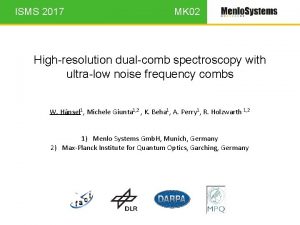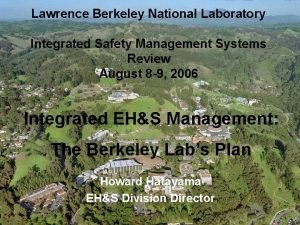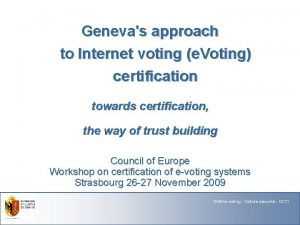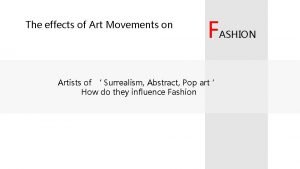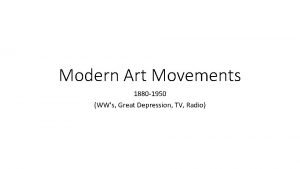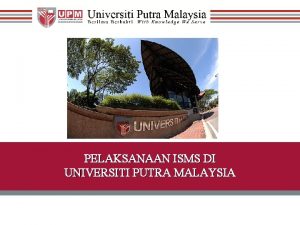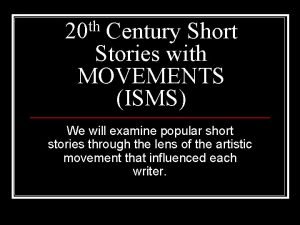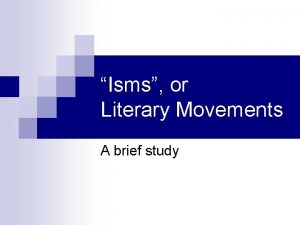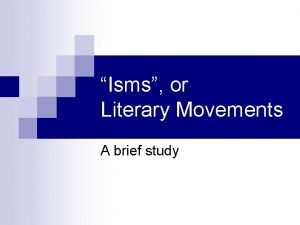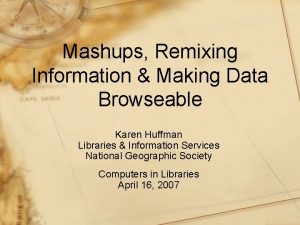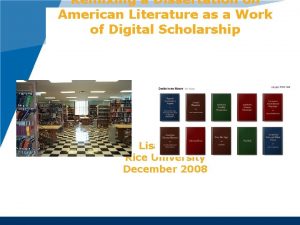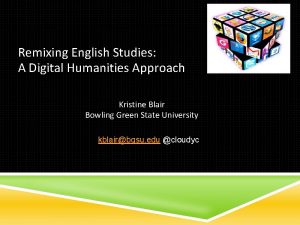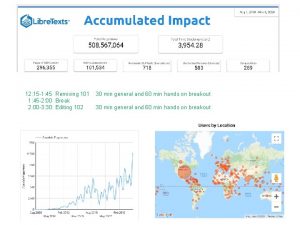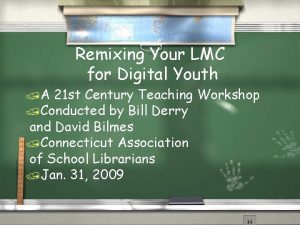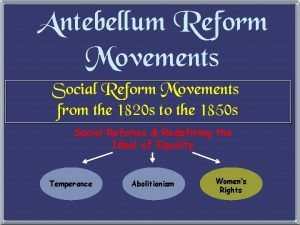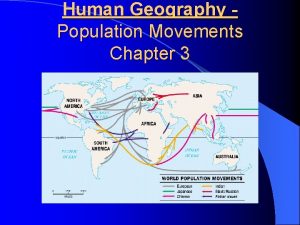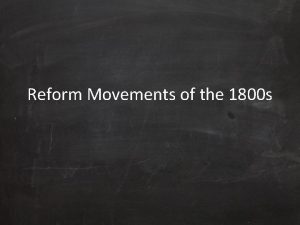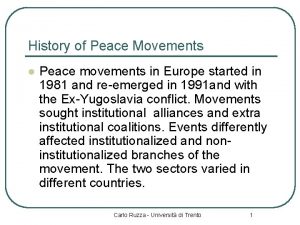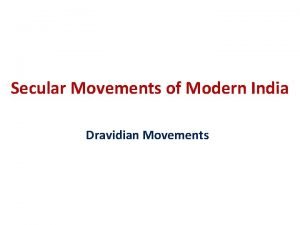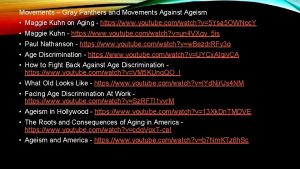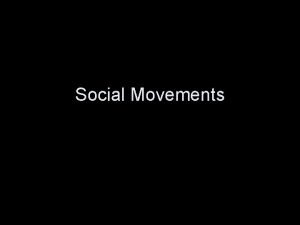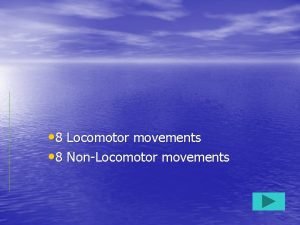Art Movements The isms The Remixing of Art






























- Slides: 30

Art Movements The –isms The Remixing of Art

Renaissance • 1400 -1550 (includes early, high, Venetian, and Italian Renaissance) • “Renaissance” means rebirth – a return of classical ideas from Ancient Rome and Greece. • Natural approach to depiction of the human figure – anatomically and scientifically correct. • Raised the status of artists in society to be on par with writers and philosophers. • Classical content – human figure, religious figures (Madonna, baby Jesus, angels).

Rennaisance

Mannerism • 1520 -1580 • Personalized and idealized interpretation of figures, rather than “true to nature” depiction of Renaissance artists. • Exaggerated and elegant representation of figures.

Mannerism

Baroque • • • 1600 -1700 Reaction against artificial stylization of the Mannerists. Realistic interpretation; figures in action; emotional. Religious, mythical, historical subjects. Used as propaganda for the Church and State.

Baroque Art as a weapon in religious wars.

Rococo • 1700 -1775 • Decorative response to Baroque. • Said to be refined and elegant by some, pompous and pretentious by others.

Rococo

Neo. Classicism • 1765 -1850 • Reaction to the pompous-ness of Rococo. • Age of the Enlightenment; political, social, and cultural revolutions. • Needed/wanted serious art that reflected more serious times. • Historical scenes of heroism and virtuosity for political propaganda.

Neo. Classicism

Romanticism • 1765 -1850 • Valued expression of emotion over the control of Classicism. • Emotive and sensual subjects.

Romanticism Imagination and individuality.

Romanticism Imagination and individuality.

Realism • • • 1840 -1880 Focused on everyday reality of subject. Reaction against heightened emotions of Romanticism. Objective truth; social realities. Inspired by “visual reality” theme brought about by the invention of photography in 1840 s.

Realism Revolted against typical subjects; painted “real” life and ordinary subjects.

Impressionism • • 1870 -1890 Analyzed color and light in nature. Lost much of the outline and detail of their subjects. Strayed from realistic portrayal of subjects.

Impressionism Painted light rather than a subject.

Post-Impressionism • 1885 -1905 • Rebelled against Impressionism. • Not one set style – collection of many artists and styles that were all reacting to Impressionism’s formless, unstructured style.

Post Impressionism Revolted against Impressionism; reintroduced structure to the paintings.

Expressionism • 1905 -1925 • Emotional or spiritual vision of the world.

Expressionism Used emotion to distort form.

Cubism • 1907 -1915 • Show many views of the subject at the same time. • Referenced other cultures as inspiration – specifically African art.

Cubism Experiments; new art forms to reflect modern times.

Dada • 1916 -1922 • Not a style, per se, more of a reaction to the social, political, and cultural things going on at the time that led Europe to WW 1. • “Anti-art” stance. Attempted to provoke other artists by doing things “wrong. ”

Dada

Surrealism • 1924 -1939 • Positive response to Dada’s negativity. • Goal was to liberate an artist’s imagination by tapping into the unconcious and fine a “superior reality” – a surreality.

Surrealism Painting dreams and exploring the unconcious.

Abstract Expressionism • 1946 -1956 • First American art style that influenced art globally. • Physical act of painting is as important as the result.

Abstract Expressionism Abstraction and expression without form.
 Acial movement
Acial movement Pims
Pims Conservatism
Conservatism The iso 27000 series
The iso 27000 series Isms
Isms Project plan for iso 27001 implementation
Project plan for iso 27001 implementation Alex bevan
Alex bevan Isms 1042
Isms 1042 Isms org
Isms org Isms in literature
Isms in literature Isms spectroscopy
Isms spectroscopy Isms keller
Isms keller Iso 27001 roadmap
Iso 27001 roadmap The 5 isms
The 5 isms Isms guiding principles
Isms guiding principles Isms
Isms Hvad er iso 27001
Hvad er iso 27001 Art movements in fashion
Art movements in fashion Art movements
Art movements Biện pháp chống mỏi cơ
Biện pháp chống mỏi cơ Phản ứng thế ankan
Phản ứng thế ankan Voi kéo gỗ như thế nào
Voi kéo gỗ như thế nào Thiếu nhi thế giới liên hoan
Thiếu nhi thế giới liên hoan Fecboak
Fecboak điện thế nghỉ
điện thế nghỉ Một số thể thơ truyền thống
Một số thể thơ truyền thống Trời xanh đây là của chúng ta thể thơ
Trời xanh đây là của chúng ta thể thơ Thế nào là hệ số cao nhất
Thế nào là hệ số cao nhất Sơ đồ cơ thể người
Sơ đồ cơ thể người Lp html
Lp html Các số nguyên tố là gì
Các số nguyên tố là gì

